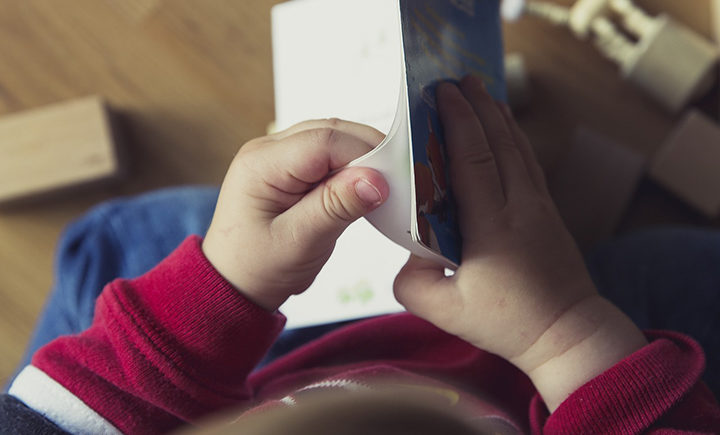|
Typical Speech Sound Development
By age 3:
By age 4:
By age 5:
By age 6:
|
Language Development
Birth to 6 months
- Reacts to loud sounds
- Turns head toward a sound source
- Watches your face when you speak
- Vocalizes pleasure and displeasure sounds (laughs, giggles, cries, or fusses)
- Makes noise when talked to
6 – 12 months
|
12 – 18 months
|
18 – 23 months
|
 |
2 – 3 years
- Knows descriptive words such as “big,” “happy”

- Knows some spatial concepts such as “in,” “on”
- Knows pronouns such as “you,” “me,” “her”
- Begins to use some verbs and adjectives
- Average expressive (spoken) vocabulary of 200 to 300 words by 24
- 65% intelligible (by 2 years)
- Answers simple “wh” questions
- Begins to use more pronouns such as “you,” “I”
- Speaks in two to three-word phrases
- Uses question inflection to ask for something (e.g., “My ball?”)
- Begins to use plurals such as “shoes” or “socks” and regular past tense verbs such as “jumped”
3 – 4 years
- Groups objects such as foods, clothes, etc.
- Identifies colors
- Understands 2000 words (by 4 years)
- Uses 1000 to 1500 words (by 4 years)
- Strangers are able to understand most of what is said.
- Able to describe the function of objects such as “spoon”, “bed”, etc.
- Has fun with language. Recognizes language absurdities such as, “Is that an elephant on your head?”
- Expresses ideas and feelings.
- Uses verbs that end in “ing,”
- Uses Possessive ’s, simple past tense, present progressive verbs (e.g. “skipping”), contractions, “not”, and pronouns are consistent
- Answers simple questions such as “What do you do when your hands are dirty?”
- Repeats sentences
4 – 5 years
- Understands more than 5,000 words
- Understands spatial concepts such as “behind,” “next to”
- Uses conjunctions “and” and “because”
- Understands complex questions
- Speech is understandable but makes mistakes pronouncing long, difficult, or complex words such as “hippopotamus”
- Says about 3000 different words
- Describes how to do things such as making a sandwich

- Defines words
- Lists items that belong in a category such as animals, vehicles, etc.
- Answers “why” questions
- Irregular plurals emerge (e.g. “mice”)
5 years
- Understands time sequences (what happened first, second, third, etc.)
- Carries out a series of three directions
- Understands rhyming
- Engages in conversation
- Sentences can be 8 or more words in length
- Uses compound and complex sentences including relative clauses (e.g. “My friend who lives down the street is coming over”), infinitive clauses with different subjects (e.g. “I want him to go), and gerund clauses (e.g. “Swimming is fun”)
- Describes objects
- Uses imagination to create story “chains” of unfocused sequences of events
From: Speech and Language Development Chart (2nd Ed.)

